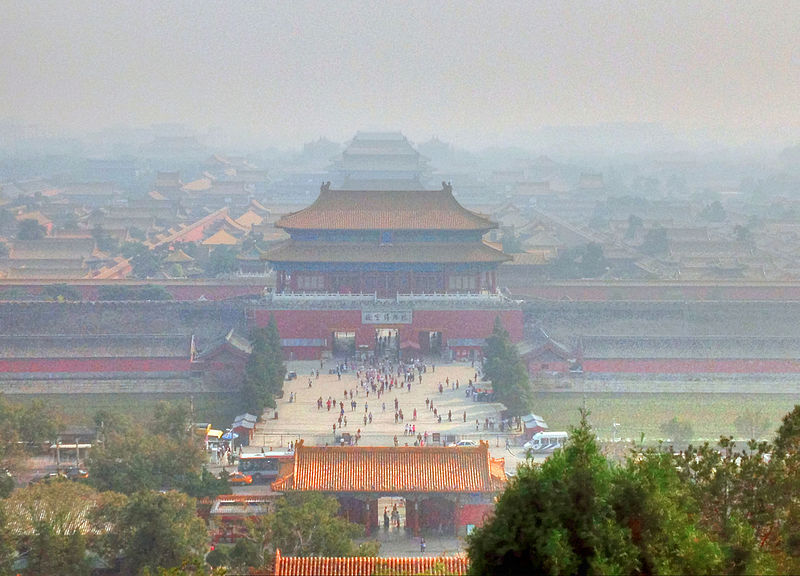By Timothy Abraham
This week’s review looks at the situation in exploration and production under low oil prices; developments in the Middle East; coal power updates from China and India; and ENI’s ‘dual exploration strategy’.
Low oil prices do not hold back E&P
E&P companies, which focus on unconventional reserves, are demonstrating their desire to keep up their activities despite unfavourable market conditions. The Economist sees them as ‘not giving a frack about financial returns’. After three years of a slowdown in their activities, it would seem to be sensible for fracking companies to wait for rising oil prices. However, the industry is instead intent on investing and exploring heavily even in currently less attractive market conditions. One of the explanations behind this E&P spree could be the lack of correlation between financial performance and the retribution of management in these fracking firms. On the other hand, companies now have lower costs and according to Art Berman in his article for Forbes, “costs have come down for all oil and gas producers since the oil-price collapse in 2014”. 90% of cost reductions came from the depression of the oil industry and “oil field service companies have slashed prices to survive”.
More on the topic:
America’s shale firms don’t give a frack about financial returns. The Economist, March 25, 2017. http://www.economist.com/news/business-and-finance/21719436-exploration-and-production-companies-are-poised-go-another-investment-spree-americas?fsrc=scn/tw/te/bl/ed/
Devashree Saha, Mark Muro. Busted: State budgets feel fracking crash. Brookings.edu Blog. April 14, 2017. https://www.brookings.edu/blog/the-avenue/2016/04/14/busted-state-budgets-feel-fracking-crash/
Art Berman. Shale Cost Reductions Are 10% Technology And 90% Industry Bust. Forbes. March 22, 2017. https://www.forbes.com/sites/arthurberman/2017/03/22/shale-cost-reductions-are-10-technology-and-90-industry-bust/#55ad5bda452f
Kuwait and Saudi Arabia back to cooperation
Kuwait and Saudi Arabia have come to an agreement to resume the operation of joint oil fields of Khafji and Wafra located in the neutral zone shared by the two countries. However, it will take some time before actual production recovers due to technical problems. Khafji was producing 300,000 barrels a day before it was closed in October, 2014, while Wafra, which closed a few months later, was pumping 200,000 barrels a day. Saudi oil giant Aramco stopped production claiming to do so in order to protect the environment, but Kuwaiti sources said there were controversies over the joint exploitation of the two deposits. Kuwait was particularly dissatisfied with the decision taken by Riyadh in 2009 to renew for 30 years a license to operate the Wafra deposit in favour of Chevron and without consultation with Kuwait.
More on the topic:
Pétrole: Koweït et Arabie vont reprendre l’exploitation de gisements conjoints. Le Figaro, March 26, 2017. http://www.lefigaro.fr/flash-eco/2017/03/26/97002-20170326FILWWW00120-petrole-koweit-et-arabie-vont-reprendre-l-exploitation-de-gisements-conjoints.php?cmtpage=0
Saudi King to Visit Kuwait ; Hope for Khafji. Kuwait Times, November 26, 2016. http://news.kuwaittimes.net/website/saudi-king-visit-kuwait-hope-khafji/
China closes its last coal fired power plant in Beijing…
The last remaining coal power plant in Beijing was closed at the end of March. Since 2014, Beijing has been closing coal-fired power generation capacity. Xinhua agency reports that the city has been busy building nuclear power plants, and it has four new natural gas-fired utilities. Beijing’s total power generating capacity is an enormous 11,3 gigawatts provided by a total of 27 power plants. China’s move away from coal-fired power plants towards gas-fired power plants came mostly due to internal pressure concerning the high level of pollution in the country. The pollution, which has reached its highest level ever this year, has led to multiple demonstrations. This has led the Communist party to take aggressive action by massively switching towards gas-fired power plants, yet the country’s domestic reserves are insufficient to cover this switch. China is currently negotiating with Gazprom, who is highly optimistic about the Chinese surge in demand.
Unfortunately, closing off coal-fired plants is not enough to solve the air pollution problem. Another major source of emissions is consumer vehicles and small local boiler facilities. However, both are being addressed by policies. Moreover, changing weather patterns linked to rising global temperatures have resulted in a dearth of wind across northern China. According to CNBC’s review of latest scientific reports, wind usually helps blow away smog, but changes in weather patterns in recent decades have left many of China’s most populous cities poorly ventilated.
More on the topic:
Kenneth Rapoza. In Bid to Improve Air Quality, Beijing Shutters Last Coal Plant. Forbes, March 20, 2017. https://www.forbes.com/sites/kenrapoza/2017/03/20/in-bid-to-improve-air-quality-beijing-shutters-last-coal-plant/#7c4d5be551d5
Владимир Сидорович. В Пекине закрыта последняя крупная угольная электростанция. RenEn, March 21, 2017. http://renen.ru/v-pekine-zakryta-poslednyaya-krupnaya-ugolnaya-elektrostantsiya/
Kinling Lo. Record-High Sea Levels Along China’s Coast ‘Could Spell Disaster’. South China Morning Post, March 23, 2017. http://app.scmp.com/scmp/mobile/index.html#/article/2081271/desktop
Javier C. Hernández. Climate Change May Be Intensifying China’s Smog Crisis. CNBC, March 24, 2017. http://www.cnbc.com/2017/03/24/climate-change-may-be-intensifying-chinas-smog-crisis.html
Russia’s Gazprom to Start Supplying Gas to China in 2019. China Daily, March 16, 2017. http://www.chinadaily.com.cn/business/2017-03/16/content_28581640.htm
… while India plans to reopen coal plant in New Delhi
The 43-year-old Badarpur Thermal Power Station, a coal-burning plant in New Delhi, was cleared to resume operations in March 2017, despite the critical levels of air pollution in the city. India, the world’s third-largest emitter of greenhouse gases (2166 MtCO2 in 2015 according to Enerdata, 2016). However, according to Nida Najar of the New York Times, the country is making almost no efforts to improve its air quality. Aishwarya Madineni, an air pollution researcher based in Bangalore, defines the mind-set of the government and the public in India as being extremely episodic: “They wake up when there’s a crisis, and they switch off after that”, as quoted by the New York Times.
More on the topic:
Nida Najar. Despite Pollution, Coal Plant Is Cleared to Reopen in New Delhi. The New York Times, March 18, 2017. https://www.nytimes.com/2017/03/18/world/asia/new-delhi-coal-plant-pollution.html?ref=energy-environment&_r=2
Timothy Abraham is a student at ENERPO Program, European University at Saint Petersburg. He can be contacted via email tabraham @ eu.spb.ru
Stories are weekly collected by the reporting team: Timothy Abraham, Alexander Geysman, Elisabeth Nguebana, Sophie Nguebana, Daniel Tsvetanov, Alberto Perego.
Cover image: Pollution in Beijing in September 2013. Credit: Yinan Chen / Wikimedia Commons

